In the timeless journey of food preservation, dehydration is a revered and ancient art. From the humble beginnings of sun-drying to the sophisticated electric dehydrators of today, this method has allowed humanity to store and savor nature's abundant harvest throughout the ages.

Bethany and her son gather from the garden. Photo by Bethany Beathard
Food dehydration, also known as food drying, is a method of removing the moisture content from food items to extend their shelf life and prevent spoilage. This preservation technique involves the controlled removal of water from fruits, vegetables, meats, herbs and other food products, inhibiting the growth of microorganisms like bacteria, yeasts and molds that typically thrive in a moist environment.
By reducing the moisture content to a level where bacterial activity is inhibited, food dehydration helps retain the food's nutritional value, flavor and texture, allowing it to be stored for extended periods without refrigeration or canning. Common methods of food dehydration include air drying, sun drying, freeze-drying, and using electric dehydrators. The resulting dried foods can be rehydrated for consumption or used as ingredients in various cooking recipes.
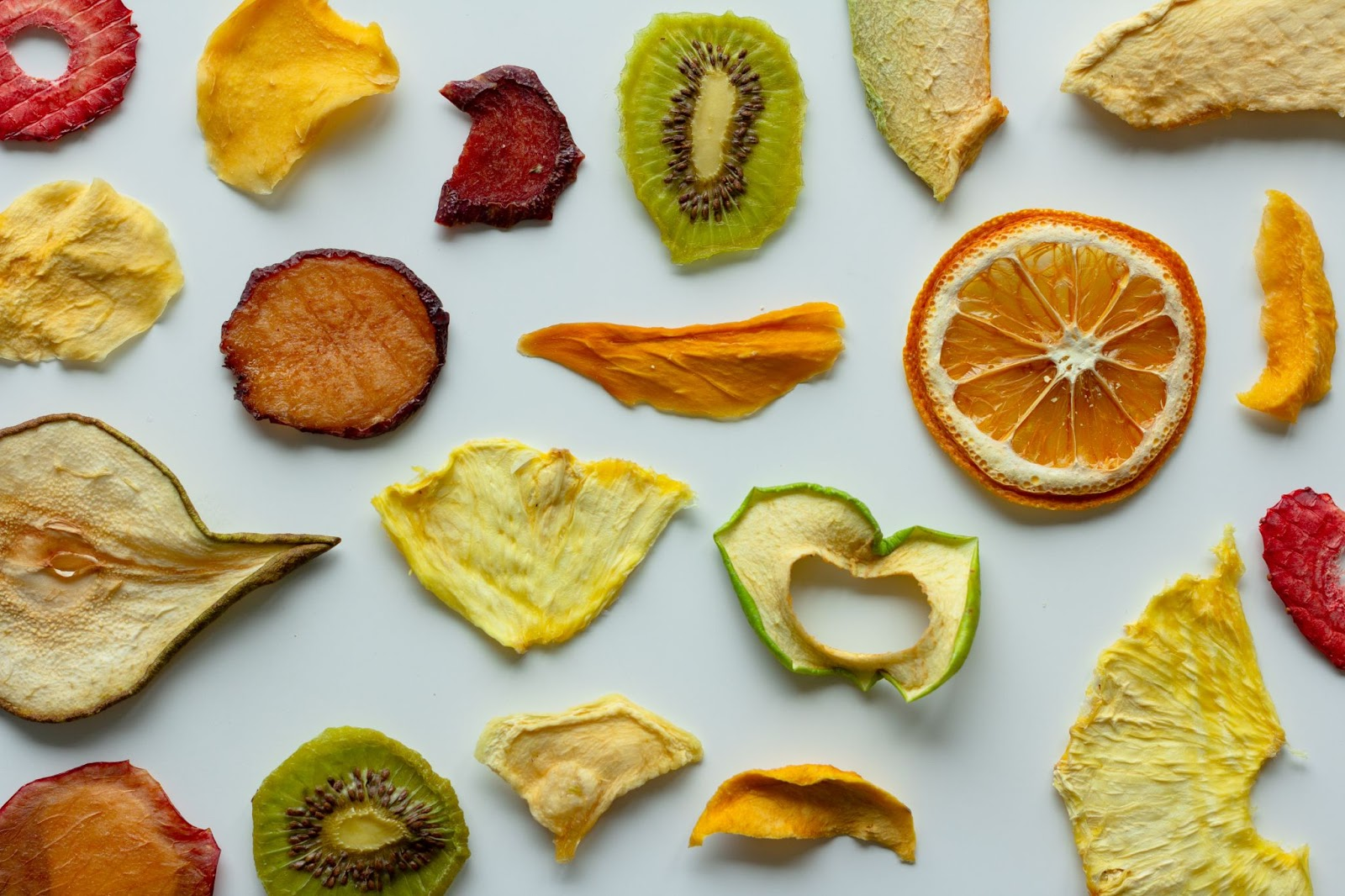
Photo by K8, Unsplash
Dehydrating food is an excellent way to process your excess garden harvest. I often dry my bell peppers for winter use in chilis and soups. Dehydration also reduces the size of the food, aiding in more compact storage.
Dehydrating Equipment and Tools
Dehydrators are such an essential tool for food preservation. These machines allow you to remove moisture from foods, effectively extending their shelf life. Several types of dehydrators are available, each with its own features and methods for removing moisture from food. Here's an overview of various types of dehydrators:
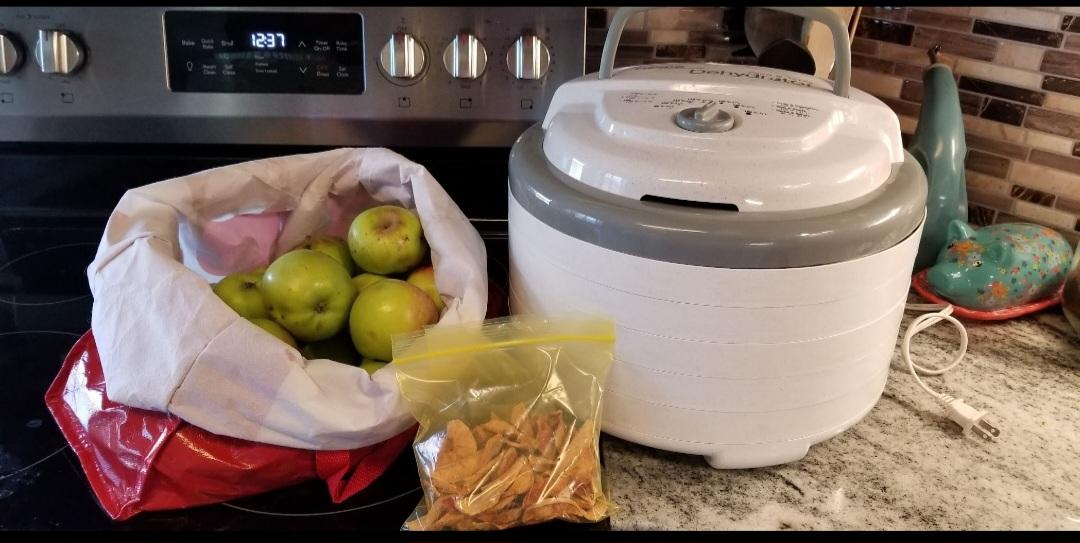
Photo by Bethany Beathard
Electric Food Dehydrators:
Electric dehydrators use heating elements and fans to circulate warm air evenly throughout the drying chamber. An advantage is they offer precise temperature control and consistent drying results. Many models come with adjustable trays and timers for convenience. These types of dehydrators are suitable for a wide range of foods, including fruits, vegetables, herbs, meats, and more.
Solar Food Dehydrators:
Solar dehydrators use the heat from the sun to dry foods. They typically consist of screened trays or racks, some exposed and others enclosed in a box with a transparent cover. A huge advantage is they are energy-efficient and eco-friendly, relying on renewable solar energy. Solar dehydrators are ideal for off-grid use. Additionally, these solar dehydrators work well for fruits, vegetables, herbs, and other foods, but they require consistent sunlight for effective drying.
Stackable Tray Dehydrators:
Stackable tray dehydrators consist of multiple stackable trays with a heating element and fan at the base or top. Air circulates vertically through the trays. Typically, these are compact and easily expandable with additional trays. They are also budget-friendly. Stackable tray dehydrators can handle a variety of foods, but they may require more frequent tray rotation for even drying.
Box or Cabinet Dehydrators:
Box or cabinet dehydrators are larger and more enclosed than stackable tray models. They feature slide-in shelves or trays for food placement. They offer more space for drying large quantities of food and often come with precise temperature controls and timers. Box or cabinet dehydrators are suitable for high-volume drying and are versatile for various foods.
Commercial Food Dehydrators:
Commercial dehydrators are heavy-duty, large-capacity units designed for commercial or industrial food processing. They are powerful, efficient, and capable of quickly drying large batches of food. Commercial dehydrators are used in commercial food production, such as making dried fruits, jerky, or herbs for resale.
Alternative Methods
Oven drying uses a conventional oven as an alternative method for dehydrating food, offering more control over the drying process compared to air drying. I have oven-dried homemade fruit roll-ups, and they turn out great. Prepare the food as you would for any dehydrating method by washing, slicing, or chopping it into uniform pieces. Preheat your oven to the lowest possible temperature, typically around 140°F. Place the food pieces on baking sheets lined with parchment paper or a silicone baking mat. Make sure to leave some space between the pieces for air circulation. If pieces are touching, they will not dry completely and actually cause moisture by steaming. Keep a close eye on the food as it dries and rotate the baking sheets as needed to ensure even drying. The drying time can vary from a few hours to several hours, depending on the food and oven temperature. You may need to allow moisture to escape by slightly propping your oven door open; you can use a wooden spoon. Allow the dried food to cool completely on the baking sheets. Once cool, transfer it to airtight containers or vacuum-sealed bags for storage in a cool, dark place.
Air drying is one of the simplest and most traditional methods of dehydrating food. It involves using natural airflow to remove moisture from foods like herbs, chili peppers, or certain fruits and vegetables. I often air-dry my homegrown herbs by hanging a bushel of them upside down in my kitchen. They have seemed to take on a place as a décor item as well. You may see garlic and onions braided and hung to dry. Place the food pieces on racks, screens, or strings in a well-ventilated area, such as a sunny windowsill, porch, or a dry outdoor location. Ensure that there's adequate airflow around the food. In pioneer times, people used the rafters or lofts in houses to dry, hang, and store air-dried food.
Sometimes, a mesh or cloth breathable cover is used to protect the food from dust, insects, and direct sunlight. Due to inconsistent temperature and variant airflow, food must be monitored and rotated regularly to ensure even drying. The drying time varies depending on the food and environmental conditions but can take several days to weeks. Once the food is thoroughly dried, it no longer feels moist to the touch and may even be brittle. Store it in airtight containers or vacuum-sealed bags in a cool, dark place.
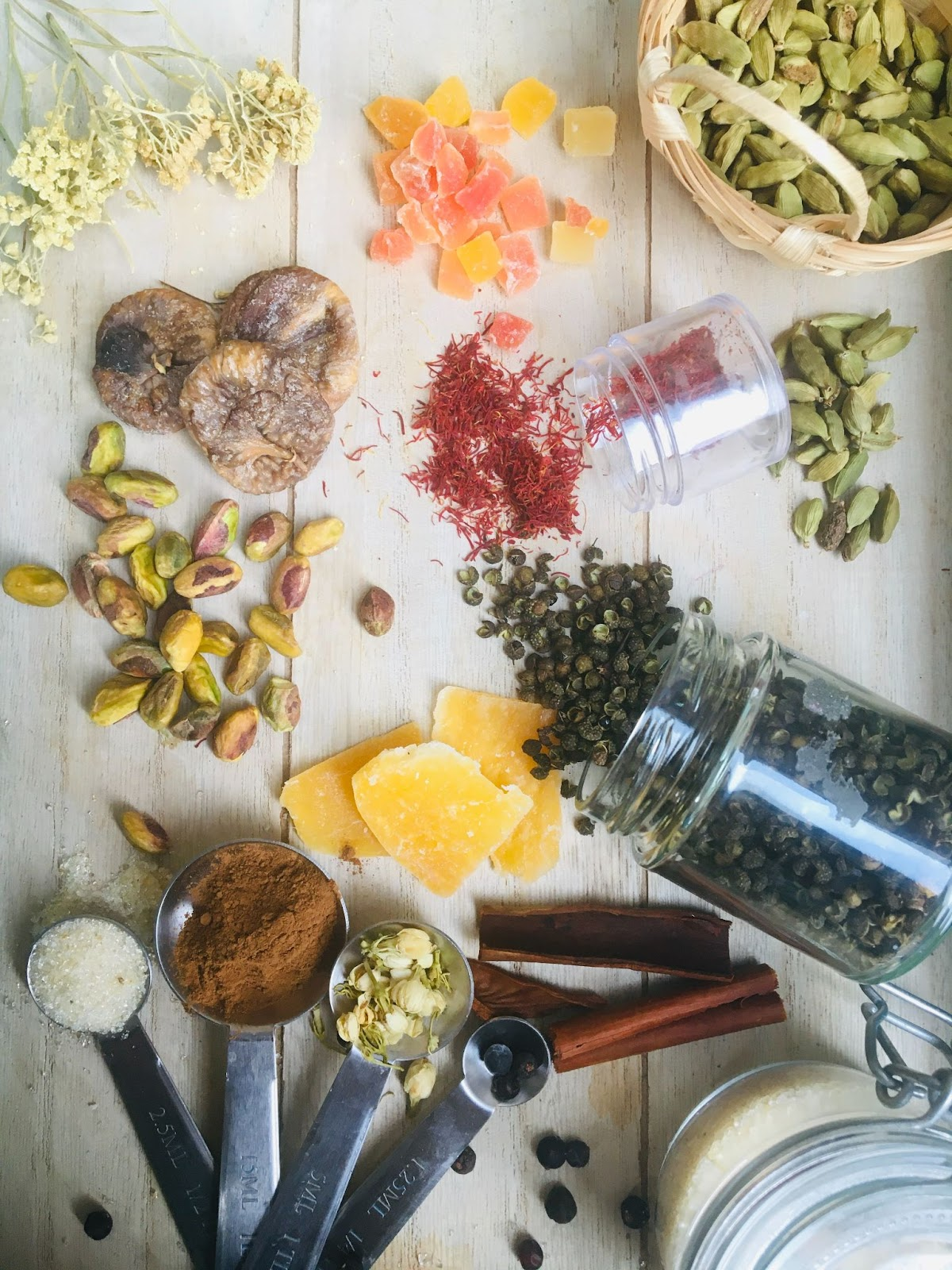
Photo by Merve Sehirli Nasir, Unsplash
While these alternative methods for dehydrating food can be effective, they may not be as precise or efficient as dedicated food dehydrators. However, they are excellent options for those who want to try their hand at food preservation without investing in specialized equipment.
In addition to the types of dehydrators, there are a few handy tools to make the process easier. Nonstick mesh screens, fruit roll sheets, or parchment paper help the food items dry and allow for adequate air circulation to remove moisture.
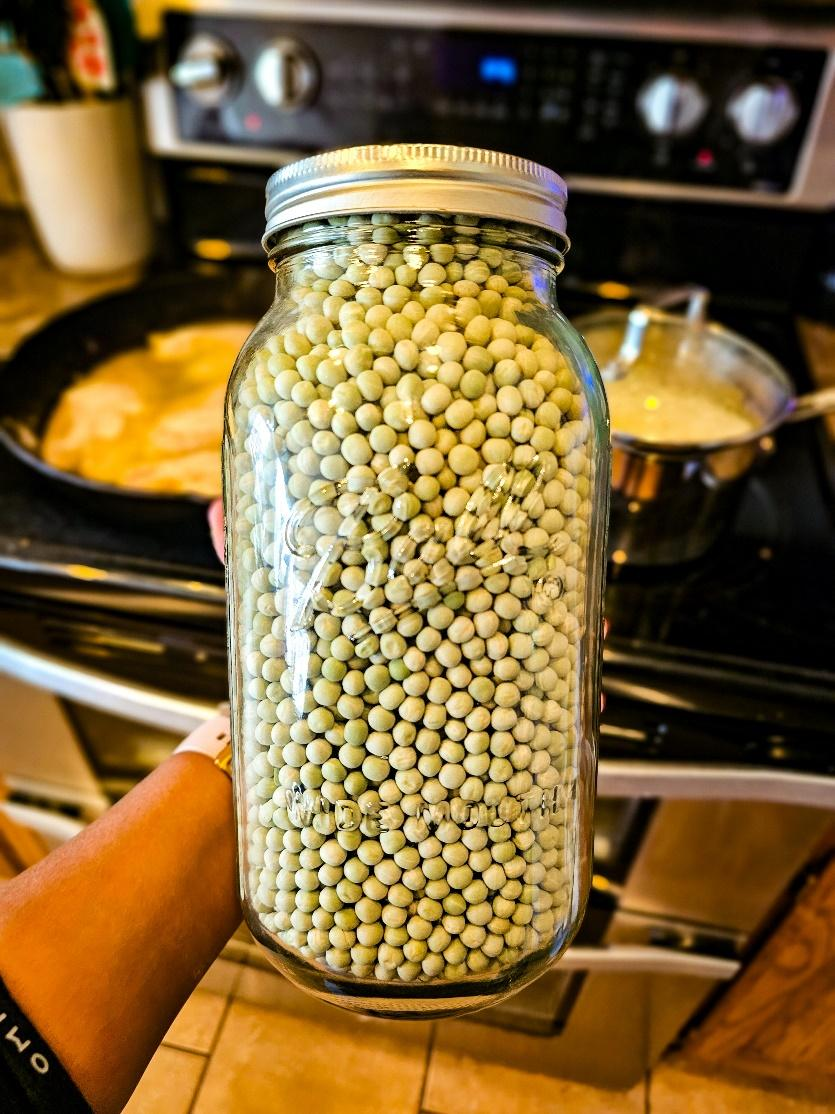
Jar of freeze-dried peas. Photo by Bethany Beathard
Freeze Drying
Freeze drying is a dehydration method that differs significantly from conventional drying techniques. At home devices are a substantial investment. It seems their popularity in the homestead market is rising. The process involves freezing the food item first and then removing the moisture under controlled conditions. It begins by placing the food in a deep freeze at extremely low temperatures, often below -40°F. The freezing phase solidifies the water content within the food. Next, a vacuum chamber creates a low-pressure environment, causing the ice to sublimate directly from a solid to a vapor without passing through the liquid phase. This sublimation process effectively removes the water from the food while preserving its structure, taste, aroma, and nutritional content. Freeze drying is widely used for various products, including fruits, vegetables, meats, and even instant coffee. It's valued for its ability to produce lightweight, shelf-stable foods that rehydrate easily, making it a popular choice for backpackers and homesteaders.
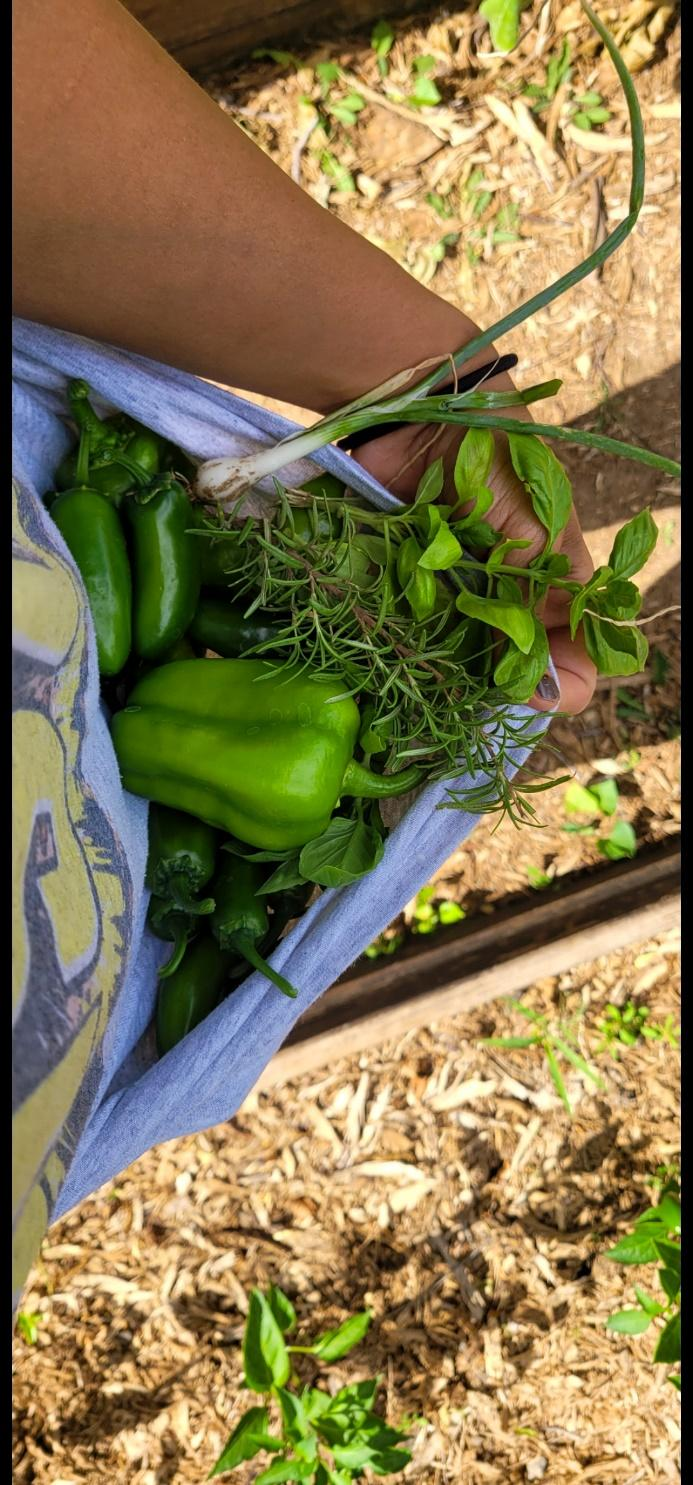
Photo by Bethany Beathard
Preparing Food and The Dehydration Process
When it comes to preparing food to dehydrate, it will vary depending on what is required. It is best to select food at the peak of harvest. Most fruits and vegetables benefit from pretreatments such as blanching or dipping. Pretreatments are used to slow enzymes and kill microorganisms. In addition, processes like dipping prevent fruits from oxidizing and turning brown in color.
Regarding temperature, food dehydrators typically operate at low temperatures, typically between 95°F to 165°F. The exact temperature depends on the type of food and desired results. Lower temperatures are often used for fruits, vegetables, and herbs to preserve their color and nutritional content. In comparison, higher temperatures are used for meat recipes like jerky to ensure food safety. The dehydration process can take several hours to a couple of days, depending on the food's moisture content, the slices' thickness, and the humidity level.
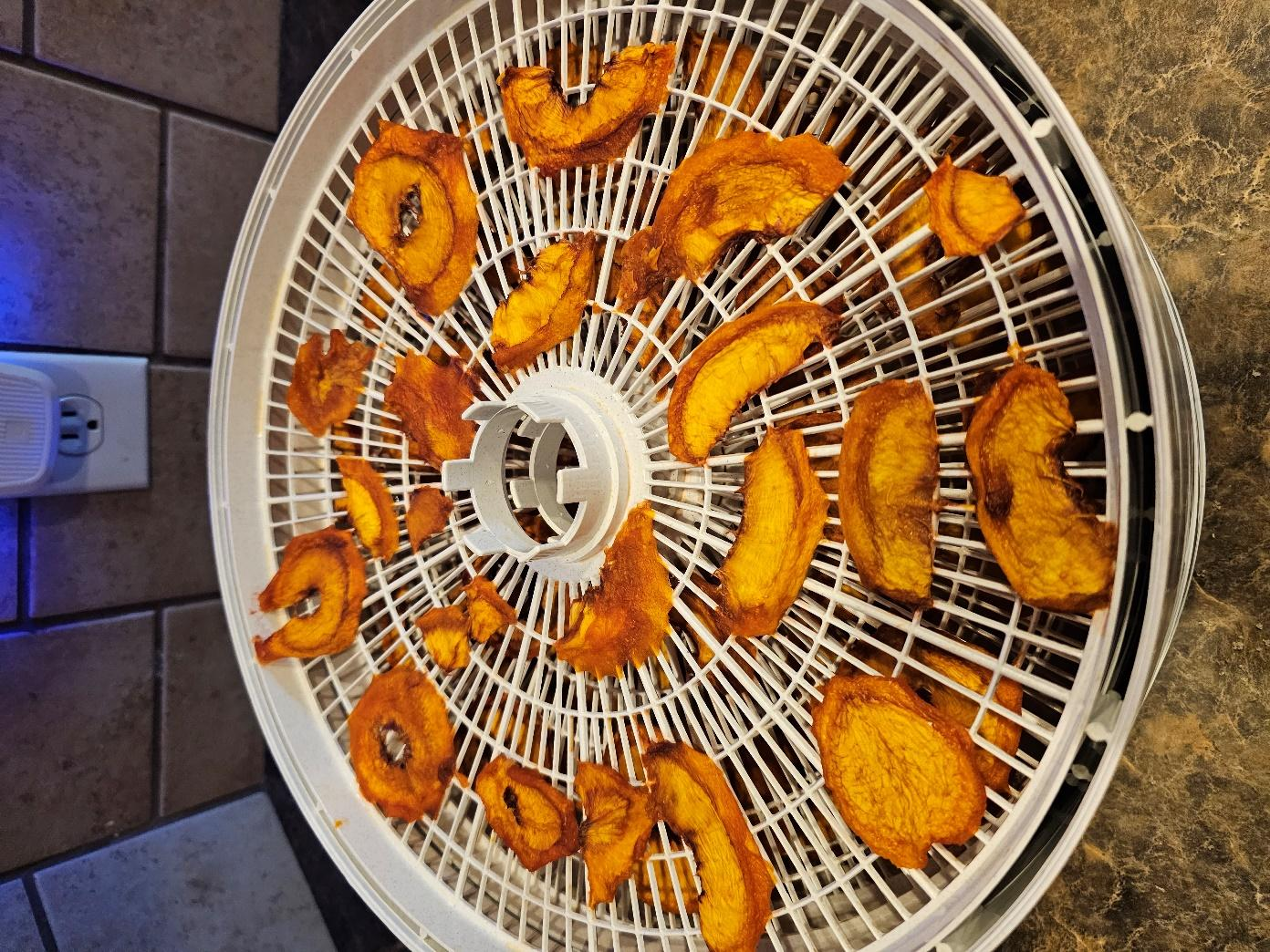
Photo by Bethany Beathard
Dehydrated Food Storage
Once the food has completely cooled, you can begin storing it. Use food-grade, airtight containers. These protect from air and moisture; I mainly use canning jars. These allow you to observe the contents for any change without opening. Vacuum sealing or freezing are options as well. Dehydration can be essential to your long-term food storage strategy and emergency preparedness plan. Dried foods have a shelf life of 4-12 months, depending on the food item and storage conditions. Foods can then be rehydrated by presoaking or will rehydrate during the cooking process.
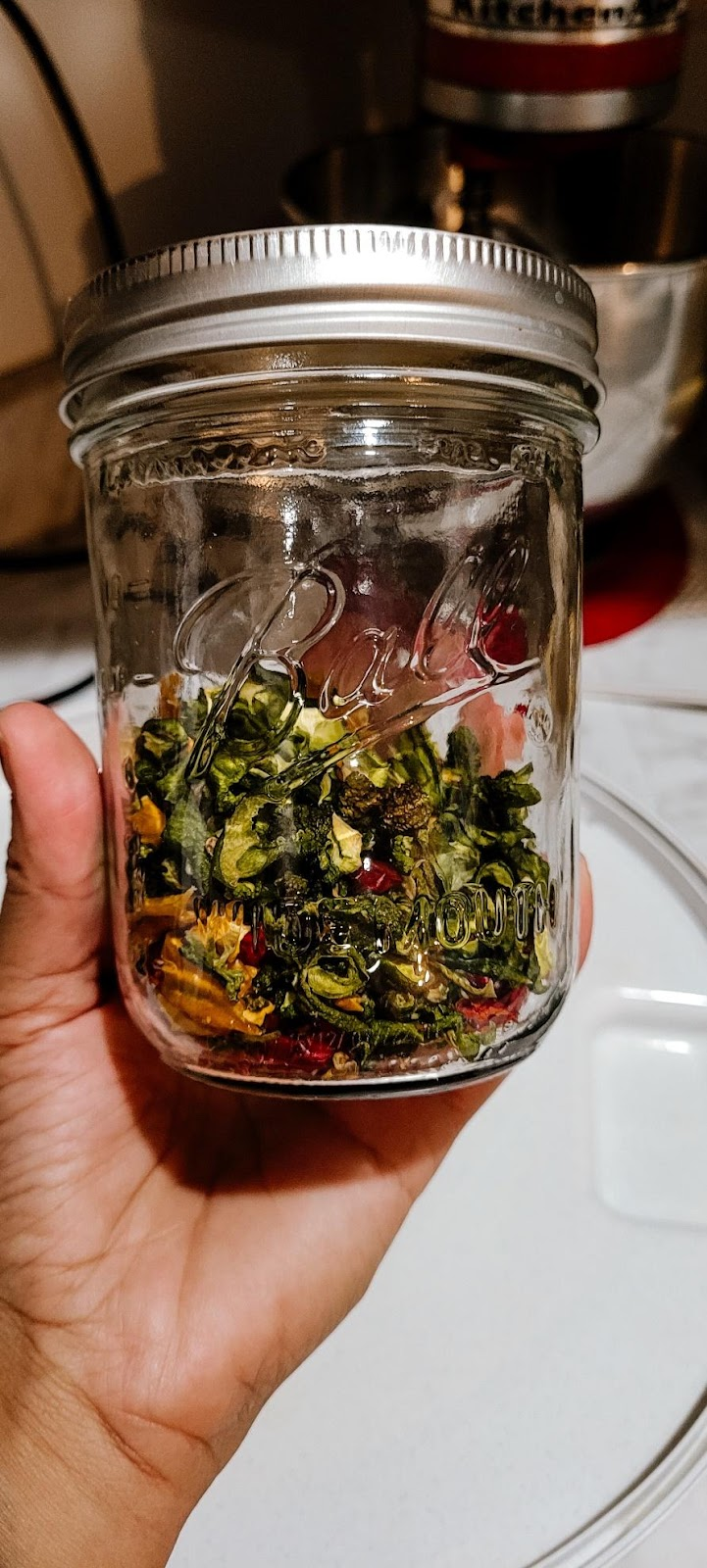
Dried sliced Green peppers from Bethany’s garden
The process of dehydration is a balance of time, temperature, spacing, and airflow, all working in harmony to transform fresh foods into lightweight, shelf-stable delights. Whether preserving fruits and vegetables or creating savory jerky for on-the-go snacking, understanding and managing these factors is key to successful food preservation. Dehydration enhances the longevity of foods and offers a sustainable and nutritious way to enjoy seasonal produce year-round. So, whether you're a seasoned home preserver or a newcomer to the world of dehydration, embracing these principles can open a world of possibilities while reducing food waste and promoting self-sufficiency.
